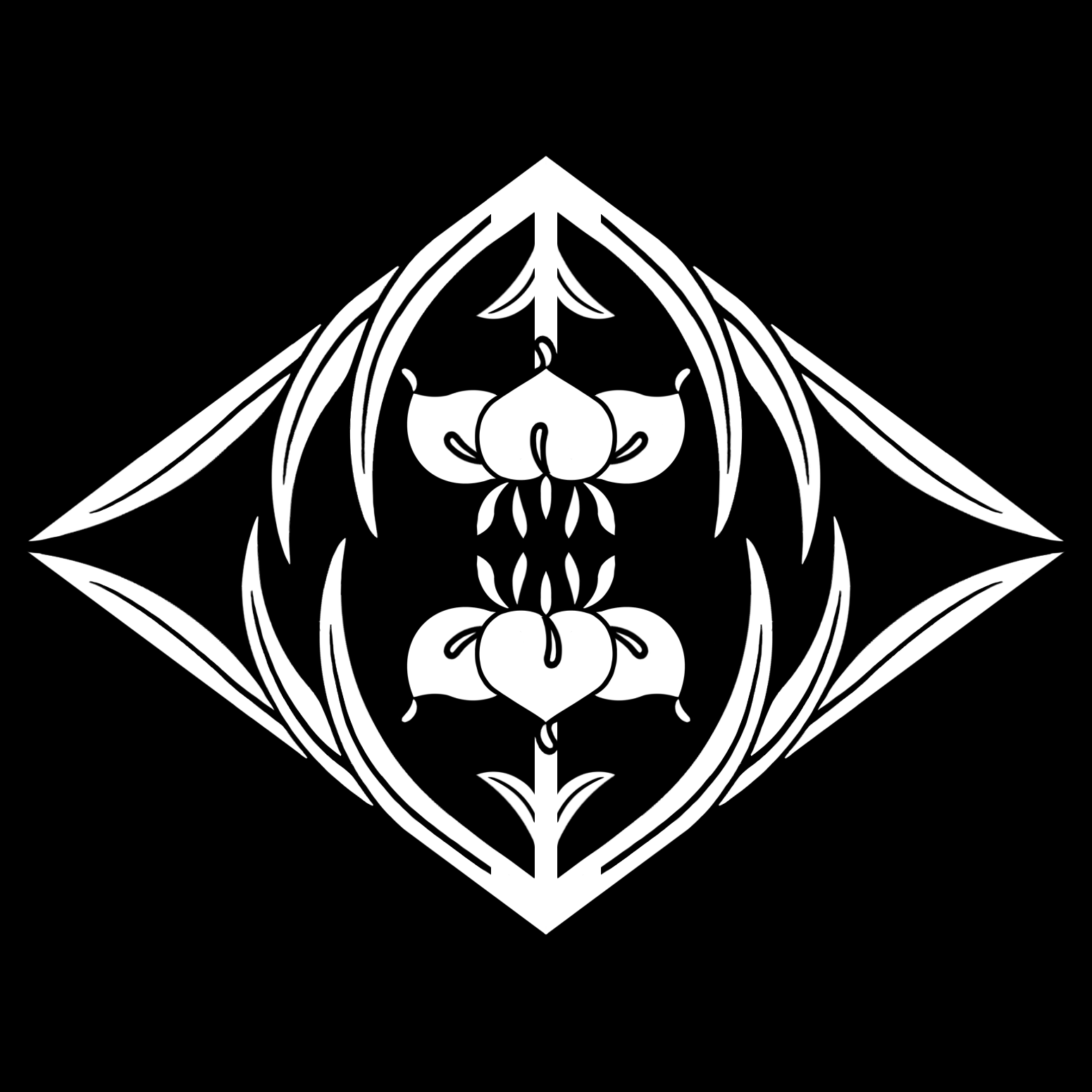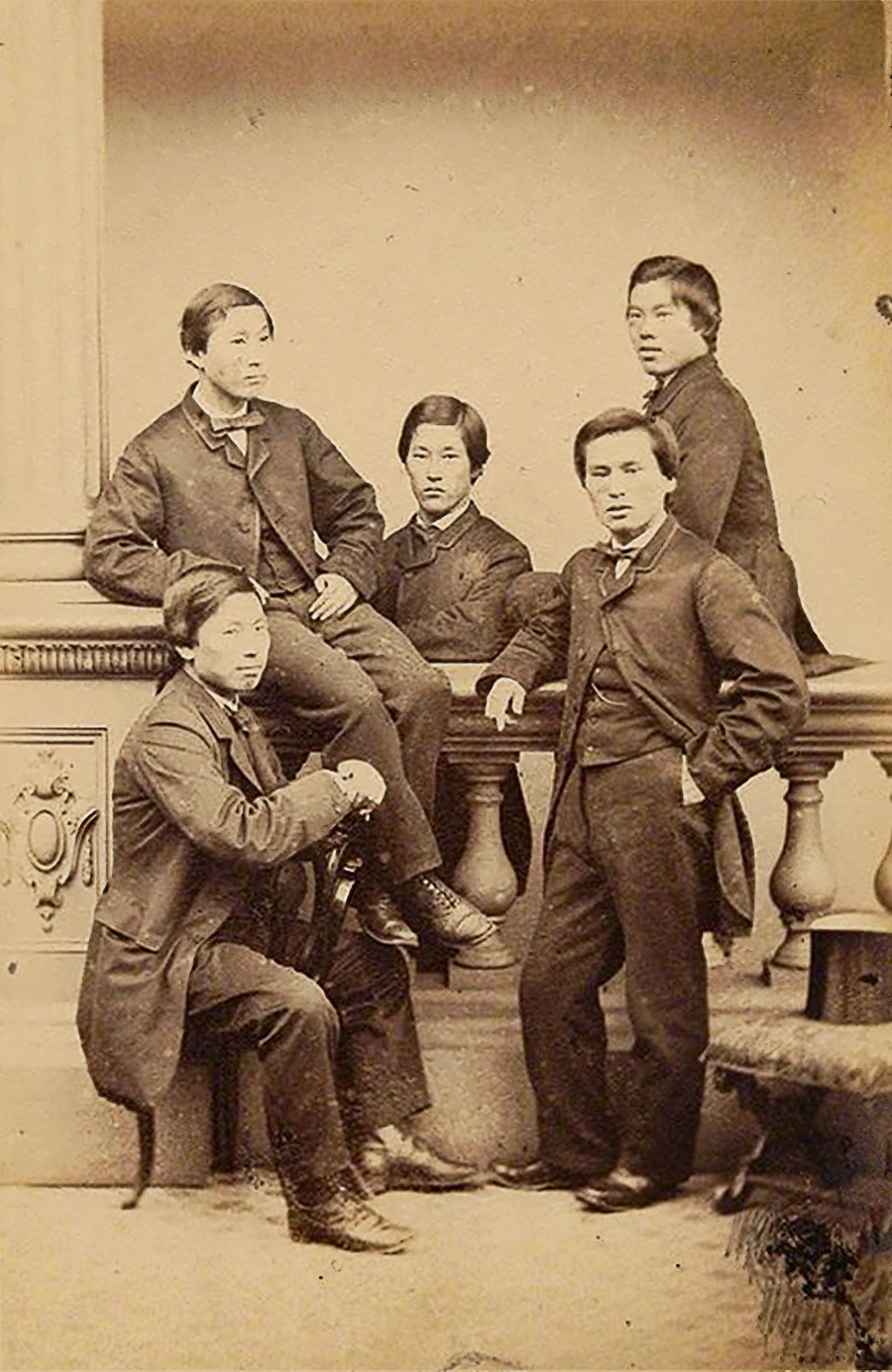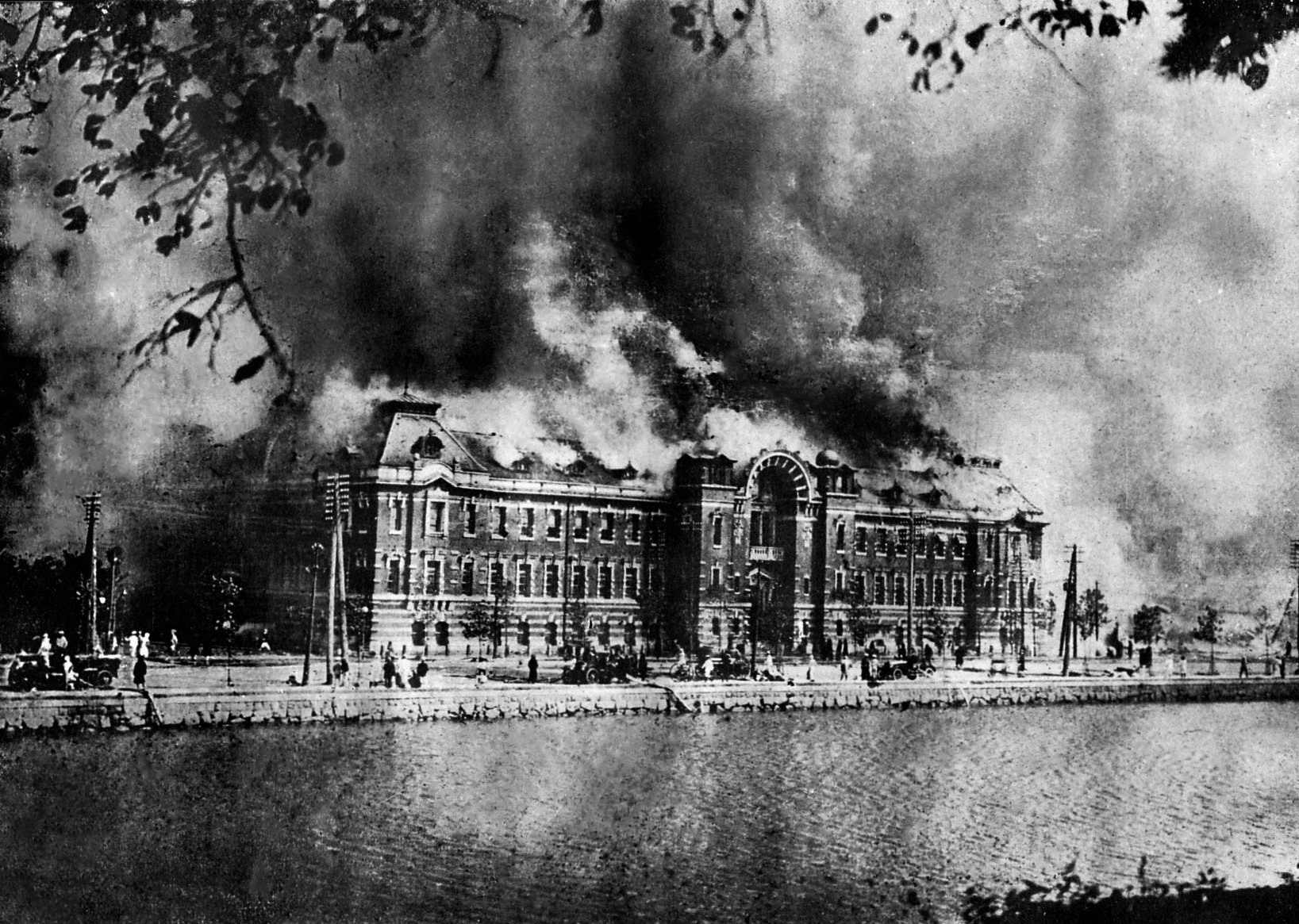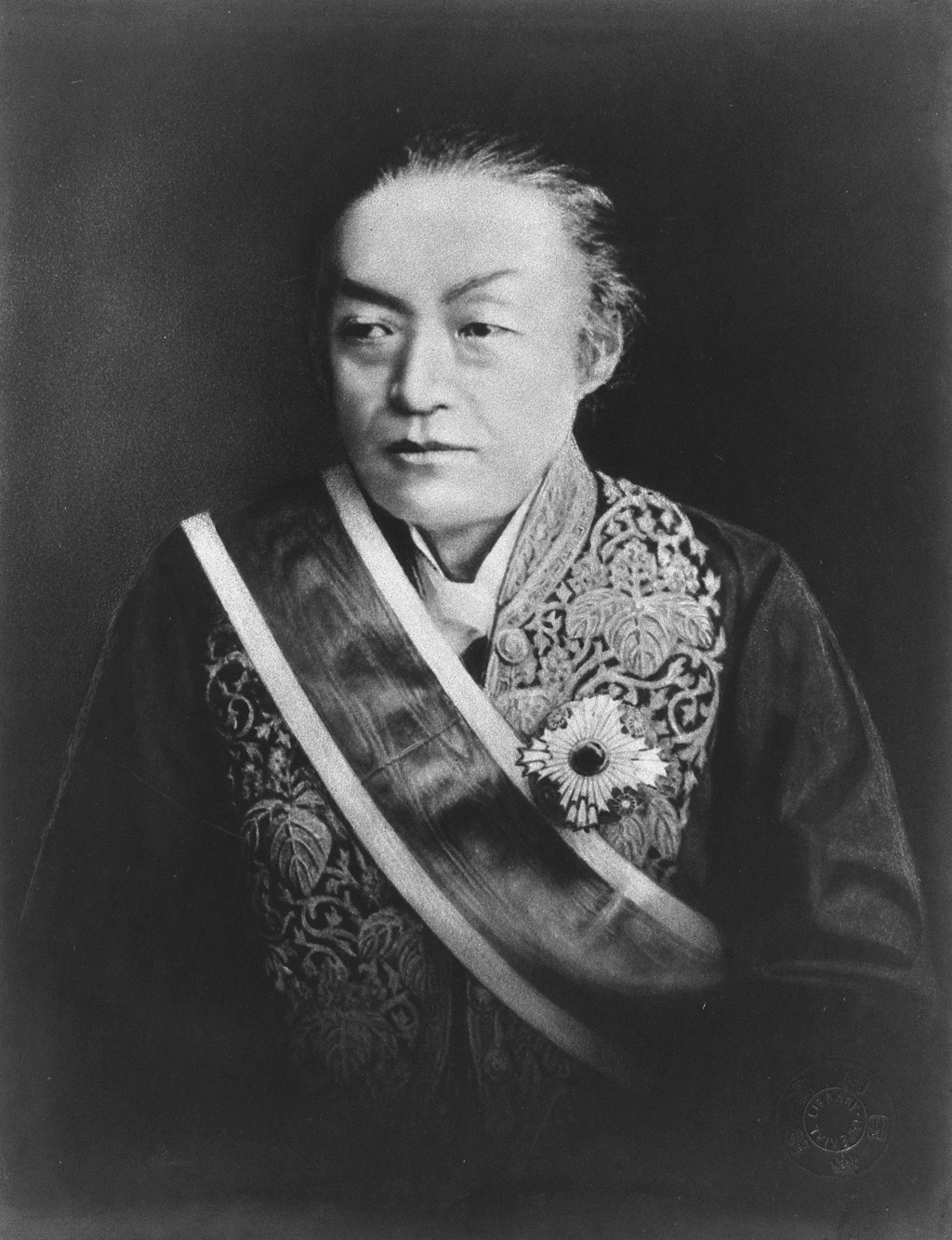|
Kazoku
The was the hereditary peerage of the Empire of Japan, which existed between 1869 and 1947. It was formed by merging the feudal lords (''Daimyo, daimyō'') and court nobles (''kuge'') into one system modelled after the British peerage. Distinguished military officers, politicians, and scholars were occasionally ennobled until the country's defeat in the World War II, Second World War in 1945 (). The system was abolished with the Constitution of Japan, 1947 constitution, which prohibited any form of aristocracy under it, but ''kazoku'' descendants still form the core of the traditional upper class in the country's society, distinct from the nouveau riche. should not be confused with , which is pronounced the same in Japanese, but written with different characters, meaning "immediate family" (as in the film ''Kazoku (film), Kazoku'' above). Origins Following the Meiji Restoration of 1868, the ancient court nobility of Kyoto, the , regained some of its lost status. Several ... [...More Info...] [...Related Items...] OR: [Wikipedia] [Google] [Baidu] [Amazon] |
Nakayama Tadayasu
Kazoku, Marquess Nakayama Tadayasu (Japanese: 中山 忠能, 17 December 1809 – 12 June 1888) was a Japanese nobleman and courtier of the Edo period and then one of the Kazoku of the post-1867 Empire of Japan. He was the father of Nakayama Yoshiko (1836–1907), mother of the Emperor Meiji, who was born and brought up in Nakayama's household. He had the rare honour of being awarded the Order of the Chrysanthemum while he was still alive.''The "Japan Gazette" Peerage of Japan'' (Japan Gazette, 1st edition, 1912), p. 57 Early life The second son of Nakayama Tadayori, a member of the Kuge, or court nobility, in 1821, at the age of eleven, Nakayama was named as Provisional Major-General of the Imperial Guard (Japan), Imperial Guard of the Left.Takeda HideakiNakayama Tadayasu (1809–88)at kokugakuin.ac, accessed 24 September 2013 Nakayama married Matsura Aiko (1818–1906), a daughter of Matsura Seizan, Matsura Kiyoshi (1760–1841), ninth ''daimyō'' (feudal ruler) of Hirado, Nag ... [...More Info...] [...Related Items...] OR: [Wikipedia] [Google] [Baidu] [Amazon] |
Kazoku (film)
is a 1970 Japanese film directed by Yoji Yamada. Plot The Kazami family live on the island of Iōjima, Nagasaki, where Seiichi Kamazi works in a coal mine. With the coal mine closing, Seiichi decides to move to Hokkaido and become a dairy farmer. The family rides the train between the two islands (a roughly 3,000-mile journey). Along the way, they stop in Fukuyama, where Seiichi's brother Tsutomu lives, Osaka, where they attend Expo '70, and Tokyo. In Tokyo, the family's youngest daughter passes away. Genzō, Seiichi's father, reaches Hokkaido but passes away shortly after. He is buried in a Catholic ceremony. Despite Seiichi's misgivings, Tamiko (his wife) convinces him to stay and forge a new life for themselves. Cast * Chieko Baisho as Tamiko Kazami * Hisashi Igawa as Seiichi Kazami * Chishū Ryū as Genzō Kazami * Gin Maeda * Hiroshi Inuzuka as Comedian * Kiyoshi Atsumi , born , was a Japanese actor. He is best known for portraying Tora-san in the Japanese comedy ... [...More Info...] [...Related Items...] OR: [Wikipedia] [Google] [Baidu] [Amazon] |
Itō Hirobumi
Kazoku, Prince , born , was a Japanese statesman who served as the first prime minister of Japan from 1885 to 1888, and later from 1892 to 1896, in 1898, and from 1900 to 1901. He was a leading member of the ''genrō'', a group of senior statesmen that dictated policy during the Meiji era. Born into a poor farming family in the Chōshū Domain, Itō and his father were adopted into a low-ranking samurai family. After the opening of Japan in 1854, he joined the nationalist ''sonnō jōi'' movement before being sent to England to study at University College London in 1863. Following the Meiji Restoration of 1868, Itō was appointed the junior councilor for foreign affairs in the newly formed Empire of Japan. In 1870, he traveled to the United States to study Western currency, and subsequently helped establish Japan's taxation system in 1871. Itō then set off on another overseas trip with the Iwakura Mission to the U.S. and Europe. Upon his return to Japan in 1873, he became a f ... [...More Info...] [...Related Items...] OR: [Wikipedia] [Google] [Baidu] [Amazon] |
Prince
A prince is a male ruler (ranked below a king, grand prince, and grand duke) or a male member of a monarch's or former monarch's family. ''Prince'' is also a title of nobility (often highest), often hereditary, in some European states. The female equivalent is a princess. The English word derives, via the French word ''prince'', from the Latin noun , from (first) and (head), meaning "the first, foremost, the chief, most distinguished, noble ruler, prince". In a related sense, now not commonly used, all more or less sovereign rulers over a state, including kings, were "princes" in the language of international politics. They normally had another title, for example king or duke. Many of these were Princes of the Holy Roman Empire. Historical background The Latin word (older Latin *prīsmo-kaps, ), became the usual title of the informal leader of the Roman senate some centuries before the transition to empire, the '' princeps senatus''. Emperor Augustus establishe ... [...More Info...] [...Related Items...] OR: [Wikipedia] [Google] [Baidu] [Amazon] |
Tokyo
Tokyo, officially the Tokyo Metropolis, is the capital of Japan, capital and List of cities in Japan, most populous city in Japan. With a population of over 14 million in the city proper in 2023, it is List of largest cities, one of the most populous urban areas in the world. The Greater Tokyo Area, which includes Tokyo and parts of six neighboring Prefectures of Japan, prefectures, is the most populous metropolitan area in the world, with 41 million residents . Lying at the head of Tokyo Bay, Tokyo is part of the Kantō region, on the central coast of Honshu, Japan's largest island. It is Japan's economic center and the seat of the Government of Japan, Japanese government and the Emperor of Japan. The Tokyo Metropolitan Government administers Tokyo's central Special wards of Tokyo, 23 special wards, which formerly made up Tokyo City; various commuter towns and suburbs in Western Tokyo, its western area; and two outlying island chains, the Tokyo Islands. Although most of the w ... [...More Info...] [...Related Items...] OR: [Wikipedia] [Google] [Baidu] [Amazon] |
Peerage
A peerage is a legal system historically comprising various hereditary titles (and sometimes Life peer, non-hereditary titles) in a number of countries, and composed of assorted Imperial, royal and noble ranks, noble ranks. Peerages include: Australia * Australian peers Belgium * Belgian nobility Canada * Canadian peers and baronets#Canadian nobility in the aristocracy of the United Kingdom, British peerage titles granted to Canadian subjects of the Crown * Canadian peers and baronets#Canadian nobility in the aristocracy of France, Canadian nobility in the aristocracy of France China * Chinese nobility France * Peerage of France * List of French peerages * Peerage of France#Peerage of Jerusalem, Peerage of Jerusalem Japan * Kazoku, Peerage of the Empire of Japan * House of Peers (Japan) Portugal * Chamber of Most Worthy Peers Spain * Chamber of Peers (Spain) * List of dukes in the peerage of Spain * List of viscounts in the peerage of Spain * List of barons in the peerag ... [...More Info...] [...Related Items...] OR: [Wikipedia] [Google] [Baidu] [Amazon] |
Prince Tokugawa Iesato
A prince is a male ruler (ranked below a king, grand prince, and grand duke) or a male member of a monarch's or former monarch's family. ''Prince'' is also a title of nobility (often highest), often hereditary, in some European states. The female equivalent is a princess. The English word derives, via the French word ''prince'', from the Latin noun , from (first) and (head), meaning "the first, foremost, the chief, most distinguished, noble ruler, prince". In a related sense, now not commonly used, all more or less sovereign rulers over a state, including kings, were "princes" in the language of international politics. They normally had another title, for example king or duke. Many of these were Princes of the Holy Roman Empire. Historical background The Latin word (older Latin *prīsmo-kaps, ), became the usual title of the informal leader of the Roman senate some centuries before the transition to empire, the ''princeps senatus''. Emperor Augustus established the forma ... [...More Info...] [...Related Items...] OR: [Wikipedia] [Google] [Baidu] [Amazon] |
Iwakura Tomomi
was a Japanese statesman during the Bakumatsu and Meiji period. He was one of the leading figures of the Meiji Restoration, which saw Japan's transition from feudalism to modernism. Born to a noble family, he was adopted by the influential Iwakura family. By 1858 he was an advisor to Emperor Kōmei, but was exiled from the royal court from 1862 to 1867 for his moderation. After release, he became the liaison between the court and the anti-Tokugawa movement. He played a central role in the new Meiji government after 1868. He successfully opposed aggressive policies in Korea in the crisis of 1873, and was nearly assassinated by his enemies. He led the 50-member Iwakura Mission for 18 months in Europe and America, studying modern institutions, technology, and diplomacy. The Mission promoted many key reforms that quickly modernized Japan. He promoted a strong imperial system along Western lines, and played a central role in creating financial institutions for the nation. The ... [...More Info...] [...Related Items...] OR: [Wikipedia] [Google] [Baidu] [Amazon] |
Empire Of Japan
The Empire of Japan, also known as the Japanese Empire or Imperial Japan, was the Japanese nation state that existed from the Meiji Restoration on January 3, 1868, until the Constitution of Japan took effect on May 3, 1947. From Japan–Korea Treaty of 1910, 1910 to Japanese Instrument of Surrender, 1945, it included the Japanese archipelago, the Kuril Islands, Kurils, Karafuto Prefecture, Karafuto, Korea under Japanese rule, Korea, and Taiwan under Japanese rule, Taiwan. The South Seas Mandate and Foreign concessions in China#List of concessions, concessions such as the Kwantung Leased Territory were ''de jure'' not internal parts of the empire but dependent territories. In the closing stages of World War II, with Japan defeated alongside the rest of the Axis powers, the Japanese Instrument of Surrender, formalized surrender was issued on September 2, 1945, in compliance with the Potsdam Declaration of the Allies of World War II, Allies, and the empire's territory subsequent ... [...More Info...] [...Related Items...] OR: [Wikipedia] [Google] [Baidu] [Amazon] |
Constitution Of Japan
The Constitution of Japan is the supreme law of Japan. Written primarily by American civilian officials during the occupation of Japan after World War II, it was adopted on 3 November 1946 and came into effect on 3 May 1947, succeeding the Meiji Constitution of 1889. The constitution consists of a preamble and 103 articles grouped into 11 chapters. It is based on the principles of popular sovereignty, with the Emperor of Japan as the symbol of the state; pacifism and the renunciation of war; and Individual and group rights, individual rights. Upon the surrender of Japan at the end of the war in 1945, Japan was occupied and U.S. General Douglas MacArthur, the Supreme Commander for the Allied Powers, directed Prime Minister Kijūrō Shidehara to draft a new constitution. Shidehara created a committee of Japanese scholars for the task, but MacArthur reversed course in February 1946 and presented a draft created under his own supervision, which was reviewed and modified by the schol ... [...More Info...] [...Related Items...] OR: [Wikipedia] [Google] [Baidu] [Amazon] |
Kuge
The was a Japanese Aristocracy (class), aristocratic Social class, class that dominated the Japanese Imperial Court in Kyoto. The ''kuge'' were important from the establishment of Kyoto as the capital during the Heian period in the late 8th century until the rise of the Kamakura shogunate in the 12th century, at which point it was eclipsed by the ''Bushi (warrior), bushi''. The ''kuge'' still provided a weak court around the Emperor of Japan, Emperor until the Meiji Restoration, when they merged with the ''daimyō'', regaining some of their status in the process, and formed the kazoku (peerage), which lasted until shortly after World War II (1947), when the Japanese peerage system was abolished. Though there is no longer an official status, members of the list of Kuge families, ''kuge'' families remain influential in Japanese society, government, and industry. History ''Kuge'' (from Middle Chinese ''kuwng-kæ'' , "ducal family", or "nobility" in a pre–Kazoku, peerage context) ... [...More Info...] [...Related Items...] OR: [Wikipedia] [Google] [Baidu] [Amazon] |
Nouveau Riche
; ), new rich, or new money (in contrast to old money; ) is a social class of the rich whose wealth has been acquired within their own generation, rather than by familial inheritance. These people previously had belonged to a lower social class and economic stratum (rank) within that class and the term implies that the new money, which constitutes their wealth, allowed upward social mobility and provided the means for conspicuous consumption, the buying of goods and services that signal membership in an upper class. As a pejorative term, ''nouveau riche'' affects distinctions of type, the given stratum within a social class; hence, among the rich people of a social class, ''nouveau riche'' describes the vulgarity and ostentation of the newly rich person who lacks the worldly experience and the system of values of ''old money'', of inherited wealth, such as the patriciate, the nobility, and the gentry. History The idea of ''nouveau riche'' dates at least as far back as ancie ... [...More Info...] [...Related Items...] OR: [Wikipedia] [Google] [Baidu] [Amazon] |






